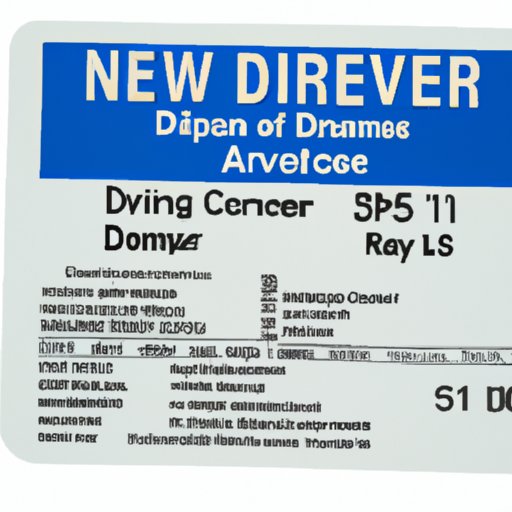
How Old Do You Have to Get Your Permit? Exploring Age Requirements By State
When it comes to learning to drive, the process can vary from state to state. One of the first steps in becoming a licensed driver is obtaining a permit. But, at what age can you get your permit? In this article, we’ll explore the age requirements for getting a permit across the United States, as well as provide helpful tips and resources for new drivers.
State Age Requirements for Getting a Permit
The age requirement for getting a permit varies by state, but in most states, drivers must be between 14 – 17 years old. However, in some states, the age requirement can be as high as 18 years old. It’s important to check with your state’s Department of Motor Vehicles (DMV) as age requirements and other details can change.
In addition to age requirements, there may be specific requirements for drivers based on their experience level. For example, in some states, individuals under 16 years old may need to complete a driver’s education course before obtaining a permit.
Variations in Age Requirements by State
As previously mentioned, the age requirement for obtaining a permit can vary widely from state to state. In Alaska, drivers only need to be 14 years old to obtain a permit, while in New Jersey the age requirement is 17 years old. There are many reasons why these requirements differ across states, including population density, urban versus rural areas, and differing infrastructure.
For example, states with more rural or less populated areas may have younger age requirements for obtaining a permit in order to accommodate the unique transportation needs of residents. In contrast, states with more heavily urbanized areas may require a higher age minimum due to increased traffic and safety concerns.
Permit vs. License
It’s important to understand the difference between a driver’s permit and a driver’s license. While a permit allows drivers to drive with an adult 18 years or older, a license gives drivers the ability to drive on their own. In some states, the age requirement for obtaining a permit may be lower than for obtaining a driver’s license.
Addressing Special Circumstances
In some states, there may be special circumstances that allow individuals to obtain a permit at a younger age, such as for hardship or work purposes. It’s important to check with your state’s DMV to see if any exceptions exist.
Preparing to Get a Permit
Preparing for a permit can be daunting for new drivers. Fortunately, there are many resources and tools available to help new drivers pass their permit test. Many states offer practice tests and study guides on their DMV websites. Additionally, there are online courses and driver’s education classes that can be taken to prepare for the test.
Common Mistakes to Avoid
When getting a permit, there are many common mistakes that drivers make that can delay the process. One mistake new drivers make is failing to study enough for the permit test. It’s important to take practice tests, read the driver’s manual provided by your state’s DMV, and take online courses to ensure you are adequately prepared.
Another common mistake is failing to bring all necessary paperwork to the DMV on the day of the test. Before going to the DMV, make sure to check the requirements and bring any necessary documents, such as birth certificates, social security cards, and proof of residency.
Success Stories to Motivate
Learning to drive and obtaining a permit can be challenging, but it’s important to remember that success is possible with enough practice and preparation. Many young drivers successfully pass their permit test every year and go on to receive their driver’s license.
One inspiring story is that of a 16-year-old girl from Idaho who successfully passed her permit test on her first try. She accredited her success to taking online courses, studying regularly, and getting plenty of practice behind the wheel with her parents.
Conclusion
In conclusion, obtaining a permit is an important step in becoming a licensed driver. Age requirements for getting a permit vary widely by state, so it’s important to check with your state’s DMV to see what the requirements are in your area. By taking advantage of resources available, such as online courses and practice tests, new drivers can prepare adequately for their permit test and have a successful outcome. Remember to avoid common mistakes and to bring all necessary paperwork to the DMV on test day to ensure a smoother process. With hard work and dedication, success in obtaining a permit and becoming a licensed driver is within reach.





